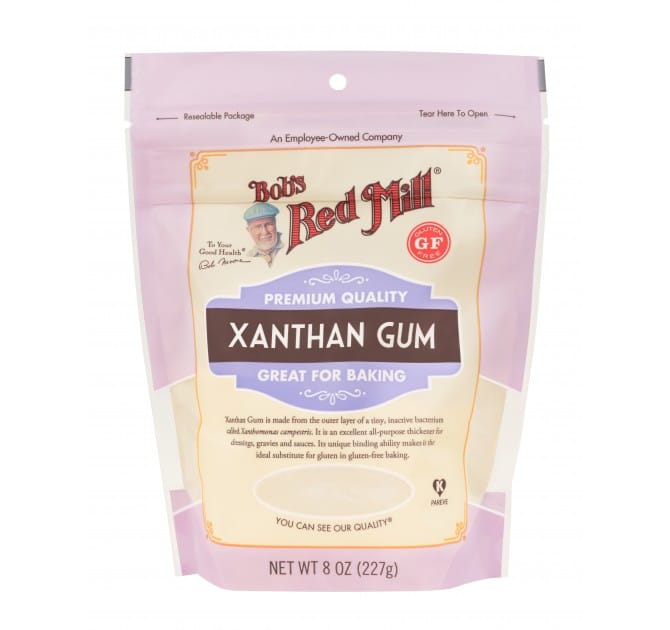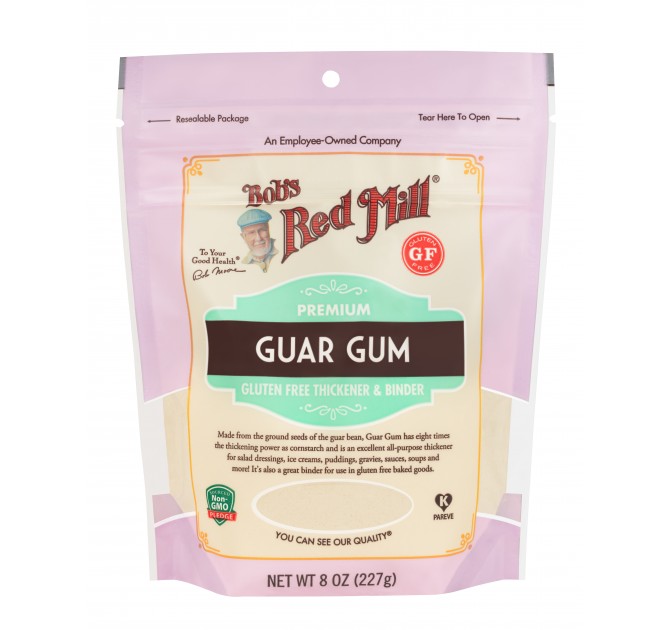Binding agents like Xanthan gum, psyllium husk powder, and guar gum are often used in gluten-free baking.
Xanthan gum, psyllium husk powder, and guar gum are binding agents and are frequently called for in gluten-free recipes and serve the same general purpose as thickeners and binding agents.
You can use one or the other or, sometimes for the best results, use them together.
I don't personally feel you need to use a binding agent in every gluten-free recipes - only the ones with high fat content.
At least that is my experience with gluten-free baking.
In recipes containing wheat (also rye or barley) the protein (gluten) in the gluten-free flour serves the same purpose that guar gum, psyllium husk powder, and xanthan gum do in gluten-free baking.
Gluten protein is what traditional recipes rely on to thicken dough and batters, trapping air bubbles to make your baked goods light and fluffy.
You can also get similar results by mixing the right gluten-free flours together with other ingredients like eggs, milk, and butter.

Is Xanthan Gum Gluten Free?
Yes, xanthan gum is gluten free. Xanthan gum is a sugar derived from corn that's been produced by bacteria.
When used in baking, it tends to help starches combine to trap air, while guar gum helps keep large particles suspended in the mix.
Psyllium husk powder is used to retain moisture and help breads from becoming too crumbly.
Guar gum is good for cold foods such as ice cream or pastry fillings, while xanthan gum is better for baked goods including yeast breads.
I’ve used psyllium husk powder for both purposes.

Foods with a high acid content (such as lemon juice) can cause guar gum to lose its thickening abilities.
For recipes involving citrus you’ll want to use xanthan gum or increase the amount of guar gum used.
There are no set rules on which one you use; you’ll have to experiment yourself to see what works best in your recipes.
Most packages of xanthan gum, psyllium husk powder, and guar gum have recommendations for how much to use with different types of recipes.
Is psyllium husk gluten free?
Yes, psyllium hush is gluten-free. Many people use psyllium husk powder as a binding agent in gluten-free recipes instead of xanthan gum or guar gum.
Psyllium Husk Substitute
If you can't consume psyllium husk you can use guar gum or xanthan gum to help bind your ingredients.
You use less guar gum or xanthan gum. Don't replace it as a 1:1. Only use ½ to ⅓ as much.
For example: If the recipe calls for 1 tablespoon of psyllium husk, use 1 teaspoon of xanthan gum.
Psyllium Husk Powder Substitute
Psyllium Husk Powder is the powdered form of psyllium husk. The same as above, If you can't consume psyllium husk you can use guar gum or xanthan gum to help bind your ingredients.
Helpful Measurements for gluten-free binding agents:
Xanthan Gum for gluten-free baking
Cookies………………………………¼ teaspoon per cup of flour
Cakes and Pancakes………………½ teaspoon per cup of flour
Muffins and Quick Breads………¾ teaspoon per cup of flour
Breads………………………………1 to 1-½ tsp. per cup of flour
Guar Gum for gluten-free baking
Cookies………………………………¼ to ½ tsp. per cup of flour
Cakes and Pancakes………………¾ teaspoon per cup of flour
Muffins and Quick Breads…………1 teaspoon per cup of flour
Breads………………………………1-½ to 2 tsp. per cup of flour
Do you use binding agents in your gluten-free baking? Leave me a comment below with what binding agent you use.

